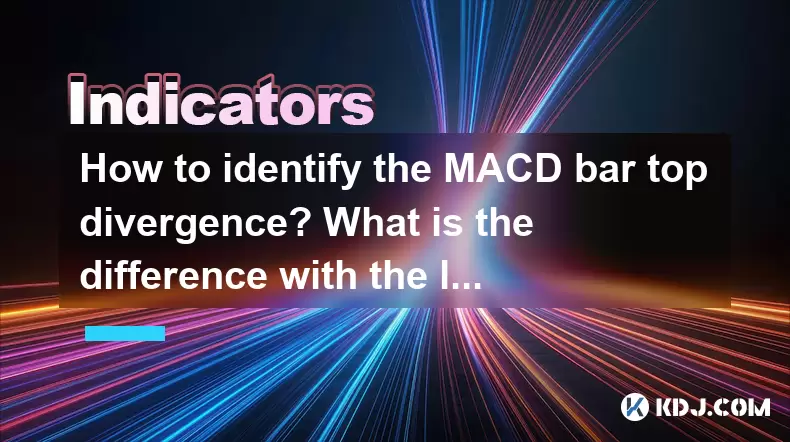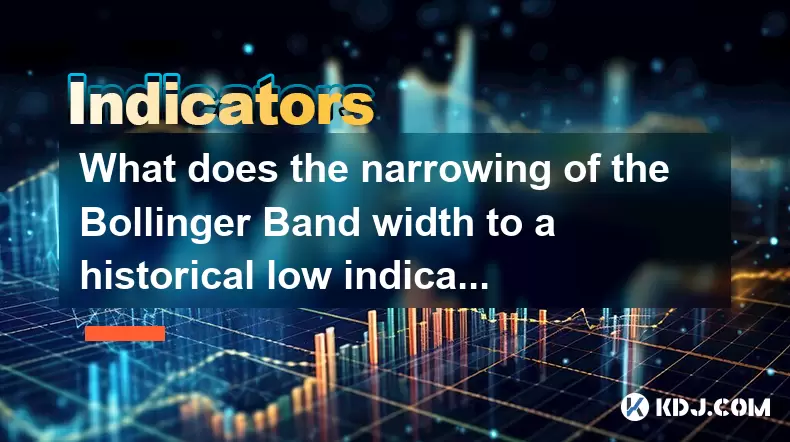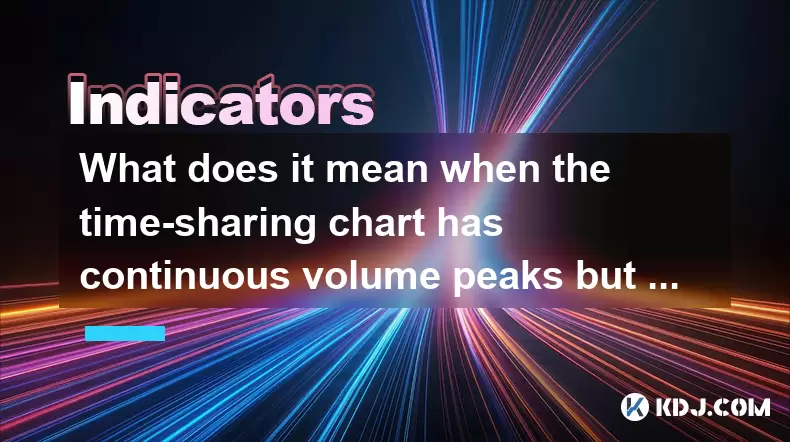-
 Bitcoin
Bitcoin $102,936.6333
3.84% -
 Ethereum
Ethereum $2,303.2860
5.42% -
 Tether USDt
Tether USDt $1.0008
0.05% -
 XRP
XRP $2.0592
5.18% -
 BNB
BNB $630.3035
4.07% -
 Solana
Solana $139.0485
7.91% -
 USDC
USDC $1.0000
0.01% -
 TRON
TRON $0.2722
3.17% -
 Dogecoin
Dogecoin $0.1572
6.30% -
 Cardano
Cardano $0.5543
5.37% -
 Hyperliquid
Hyperliquid $37.0789
8.94% -
 Bitcoin Cash
Bitcoin Cash $454.8827
2.38% -
 Sui
Sui $2.6088
10.94% -
 UNUS SED LEO
UNUS SED LEO $9.0751
0.81% -
 Chainlink
Chainlink $12.1078
6.95% -
 Stellar
Stellar $0.2351
5.76% -
 Avalanche
Avalanche $17.1771
7.35% -
 Toncoin
Toncoin $2.8438
5.50% -
 Shiba Inu
Shiba Inu $0.0...01112
7.74% -
 Litecoin
Litecoin $82.9385
5.91% -
 Hedera
Hedera $0.1409
8.82% -
 Ethena USDe
Ethena USDe $1.0006
0.01% -
 Monero
Monero $301.2470
1.77% -
 Dai
Dai $1.0001
0.01% -
 Polkadot
Polkadot $3.2751
3.88% -
 Bitget Token
Bitget Token $4.0623
2.00% -
 Uniswap
Uniswap $6.5652
8.27% -
 Pepe
Pepe $0.0...09287
7.77% -
 Pi
Pi $0.5146
6.32% -
 Aave
Aave $242.0173
11.35%
How to identify the MACD bar top divergence? What is the difference with the linear top divergence?
MACD bar top divergence signals a bearish reversal when price hits a higher high but the MACD histogram shows a lower high, indicating weakening momentum.
May 22, 2025 at 03:00 pm

Introduction to MACD and Divergence
The Moving Average Convergence Divergence (MACD) is a popular technical indicator used by traders to identify trends and potential reversals in the cryptocurrency market. It consists of two lines: the MACD line and the signal line, along with a histogram that represents the difference between these two lines. Divergence occurs when the price action of an asset moves in the opposite direction of a technical indicator, such as the MACD, signaling a potential change in trend.
Understanding MACD Bar Top Divergence
MACD bar top divergence is a specific type of bearish divergence that occurs at the top of a price trend. It is identified when the price of a cryptocurrency forms a higher high, but the MACD histogram forms a lower high. This discrepancy suggests that the bullish momentum is weakening, and a potential reversal to the downside may be imminent.
To identify MACD bar top divergence, traders should follow these steps:
- Identify the trend: Look for a clear uptrend in the price of the cryptocurrency.
- Spot the higher high in price: Confirm that the price has reached a new high compared to the previous peak.
- Check the MACD histogram: Observe that the MACD histogram has formed a lower high during the same period that the price reached its new high.
- Confirm the divergence: Ensure that the divergence between the price and the MACD histogram is clear and significant.
Difference Between MACD Bar Top Divergence and Linear Top Divergence
While both MACD bar top divergence and linear top divergence indicate potential bearish reversals, they differ in how they are identified and interpreted. Linear top divergence involves the MACD line rather than the histogram.
Linear top divergence occurs when the price of a cryptocurrency forms a higher high, but the MACD line forms a lower high. This type of divergence is more commonly used and can be easier to spot because it involves the MACD line, which is typically smoother and less volatile than the histogram.
Here are the key differences between MACD bar top divergence and linear top divergence:
- Component used: MACD bar top divergence uses the histogram, while linear top divergence uses the MACD line.
- Volatility: The histogram is more volatile and can provide earlier signals, but it may also generate more false positives. The MACD line is smoother and typically provides more reliable signals.
- Ease of identification: Linear top divergence is generally easier to identify because the MACD line is less noisy than the histogram.
Practical Example of MACD Bar Top Divergence
To illustrate how to identify MACD bar top divergence, consider the following example:
- Step 1: A cryptocurrency has been in a strong uptrend, with the price reaching a new high at $100.
- Step 2: The previous high was at $90, and the current high is at $100, confirming a higher high in price.
- Step 3: During this period, the MACD histogram shows a peak at 0.8 when the price was at $90, but only reaches 0.6 when the price hits $100.
- Step 4: The lower high in the MACD histogram compared to the higher high in price confirms the presence of MACD bar top divergence.
Practical Example of Linear Top Divergence
For a practical example of linear top divergence, consider the following scenario:
- Step 1: A cryptocurrency has been in an uptrend, with the price reaching a new high at $150.
- Step 2: The previous high was at $140, and the current high is at $150, confirming a higher high in price.
- Step 3: During this period, the MACD line shows a peak at 1.2 when the price was at $140, but only reaches 1.0 when the price hits $150.
- Step 4: The lower high in the MACD line compared to the higher high in price confirms the presence of linear top divergence.
Importance of Confirmation in Divergence Trading
Identifying divergence is just the first step in trading based on this strategy. Confirmation is crucial to avoid false signals and increase the likelihood of successful trades. Traders often use additional technical indicators or price action signals to confirm the potential reversal suggested by the divergence.
Some common confirmation methods include:
- Price breaking below a key support level: If the price breaks below a significant support level after a divergence signal, it can confirm the bearish reversal.
- Candlestick patterns: Bearish candlestick patterns, such as bearish engulfing or shooting stars, can provide confirmation of a potential reversal.
- Other technical indicators: Indicators like the Relative Strength Index (RSI) or the Stochastic Oscillator can be used to confirm overbought conditions and potential reversals.
Using Divergence in Trading Strategies
Divergence can be a powerful tool in a trader's arsenal, but it should be used as part of a comprehensive trading strategy. Here are some tips for incorporating divergence into your trading:
- Combine with other indicators: Use divergence in conjunction with other technical indicators to increase the reliability of your signals.
- Set clear entry and exit points: Define specific entry and exit points based on the divergence signals and confirmation methods.
- Manage risk: Always use stop-loss orders to manage risk and protect your capital.
- Backtest your strategy: Test your divergence-based trading strategy on historical data to assess its effectiveness and refine your approach.
Frequently Asked Questions
Q1: Can MACD bar top divergence be used for all cryptocurrencies?
A1: Yes, MACD bar top divergence can be used for all cryptocurrencies. However, the effectiveness of this indicator may vary depending on the specific market conditions and volatility of the cryptocurrency in question. It's important to backtest and validate the strategy on the specific cryptocurrency you are trading.
Q2: How often should I check for MACD bar top divergence?
A2: The frequency of checking for MACD bar top divergence depends on your trading style. For short-term traders, checking on a daily or even hourly basis may be necessary. For long-term traders, weekly or monthly checks might be sufficient. Always ensure you are using the appropriate timeframe for your trading strategy.
Q3: What other indicators can be used alongside MACD bar top divergence?
A3: Several indicators can be used alongside MACD bar top divergence to enhance your trading strategy. Some popular choices include the Relative Strength Index (RSI), the Stochastic Oscillator, and moving averages. These indicators can help confirm the signals provided by the MACD and provide additional insights into market conditions.
Q4: Is it possible to use MACD bar top divergence for both short-term and long-term trading?
A4: Yes, MACD bar top divergence can be used for both short-term and long-term trading. The key is to adjust the timeframe of your charts and the settings of the MACD indicator to suit your trading horizon. Short-term traders might use shorter timeframes and more sensitive MACD settings, while long-term traders might use longer timeframes and less sensitive settings.
Disclaimer:info@kdj.com
The information provided is not trading advice. kdj.com does not assume any responsibility for any investments made based on the information provided in this article. Cryptocurrencies are highly volatile and it is highly recommended that you invest with caution after thorough research!
If you believe that the content used on this website infringes your copyright, please contact us immediately (info@kdj.com) and we will delete it promptly.
- Crypto Penny Coins: Hunting for Monster Gains in 2025
- 2025-06-24 02:45:12
- Ethereum Whale Dips Into Crashing ETH: Smart Move?
- 2025-06-24 02:25:12
- Shiba Inu vs. Rival Tokens: Navigating the Cryptocurrency Craze in NYC
- 2025-06-24 03:10:22
- Stablecoin Scramble: Market Structure and Bill Passage in the Crypto Wild West
- 2025-06-24 02:45:12
- Circle Stock Soars: Surpassing USDC Market Cap After GENIUS Act Boost
- 2025-06-24 03:10:22
- Pepe Coin's Open Interest Hints at Potential Rally: A Trader's Guide
- 2025-06-24 02:50:12
Related knowledge

How to interpret that the time-sharing chart shows "volume and price rise together" but the MACD red column shortens?
Jun 24,2025 at 01:08am
Understanding the Concept of 'Volume and Price Rise Together'In cryptocurrency trading, when a time-sharing chart shows that both volume and price rise together, it is typically interpreted as a sign of strong buying pressure. This means more traders are entering long positions, pushing the price higher while increasing the trading volume. This phenomen...

Is it contradictory that the moving average system is arranged in a bullish pattern but the DMI shows a decline in trend strength?
Jun 23,2025 at 11:43pm
Understanding the Moving Average and DMI RelationshipIn cryptocurrency trading, technical analysis plays a crucial role in identifying potential trends and making informed decisions. Two of the most commonly used indicators are the Moving Average (MA) and the Directional Movement Index (DMI). While both tools aim to provide insight into market direction...

How to interpret that the Williams indicator quickly turns back in the overbought area but does not fall below the 50-axis?
Jun 24,2025 at 02:01am
Understanding the Williams %R Indicator in Cryptocurrency TradingThe Williams %R indicator, often referred to as Williams Percent Range, is a momentum oscillator used by traders to identify overbought or oversold conditions in financial markets, including cryptocurrency. It ranges from 0 to -100, where values above -20 are considered overbought and thos...

What is the significance of the gap formed by the gap opening not being filled within five days?
Jun 23,2025 at 09:42pm
Understanding Gaps in Cryptocurrency TradingIn the world of cryptocurrency trading, a gap refers to a situation where the price of an asset jumps from one level to another without any trading activity occurring between those two levels. This often happens over weekends or holidays when the market is closed, and significant news or events occur that impa...

What does the narrowing of the Bollinger Band width to a historical low indicate?
Jun 24,2025 at 02:35am
Understanding Bollinger Bands and Their Role in Technical AnalysisBollinger Bands, developed by John Bollinger in the 1980s, are a popular technical analysis tool used to measure market volatility. They consist of three lines: a simple moving average (SMA) in the center, typically over a 20-period setting, and two outer bands that are set at a standard ...

What does it mean when the time-sharing chart has continuous volume peaks but the price fluctuation is not large?
Jun 24,2025 at 03:49am
Understanding the Time-Sharing Chart in Cryptocurrency TradingIn cryptocurrency trading, time-sharing charts are crucial tools that help traders monitor real-time price movements and volume activity. These charts display data within specific time intervals—such as 1-minute, 5-minute, or 15-minute windows—and allow for granular analysis of market behavio...

How to interpret that the time-sharing chart shows "volume and price rise together" but the MACD red column shortens?
Jun 24,2025 at 01:08am
Understanding the Concept of 'Volume and Price Rise Together'In cryptocurrency trading, when a time-sharing chart shows that both volume and price rise together, it is typically interpreted as a sign of strong buying pressure. This means more traders are entering long positions, pushing the price higher while increasing the trading volume. This phenomen...

Is it contradictory that the moving average system is arranged in a bullish pattern but the DMI shows a decline in trend strength?
Jun 23,2025 at 11:43pm
Understanding the Moving Average and DMI RelationshipIn cryptocurrency trading, technical analysis plays a crucial role in identifying potential trends and making informed decisions. Two of the most commonly used indicators are the Moving Average (MA) and the Directional Movement Index (DMI). While both tools aim to provide insight into market direction...

How to interpret that the Williams indicator quickly turns back in the overbought area but does not fall below the 50-axis?
Jun 24,2025 at 02:01am
Understanding the Williams %R Indicator in Cryptocurrency TradingThe Williams %R indicator, often referred to as Williams Percent Range, is a momentum oscillator used by traders to identify overbought or oversold conditions in financial markets, including cryptocurrency. It ranges from 0 to -100, where values above -20 are considered overbought and thos...

What is the significance of the gap formed by the gap opening not being filled within five days?
Jun 23,2025 at 09:42pm
Understanding Gaps in Cryptocurrency TradingIn the world of cryptocurrency trading, a gap refers to a situation where the price of an asset jumps from one level to another without any trading activity occurring between those two levels. This often happens over weekends or holidays when the market is closed, and significant news or events occur that impa...

What does the narrowing of the Bollinger Band width to a historical low indicate?
Jun 24,2025 at 02:35am
Understanding Bollinger Bands and Their Role in Technical AnalysisBollinger Bands, developed by John Bollinger in the 1980s, are a popular technical analysis tool used to measure market volatility. They consist of three lines: a simple moving average (SMA) in the center, typically over a 20-period setting, and two outer bands that are set at a standard ...

What does it mean when the time-sharing chart has continuous volume peaks but the price fluctuation is not large?
Jun 24,2025 at 03:49am
Understanding the Time-Sharing Chart in Cryptocurrency TradingIn cryptocurrency trading, time-sharing charts are crucial tools that help traders monitor real-time price movements and volume activity. These charts display data within specific time intervals—such as 1-minute, 5-minute, or 15-minute windows—and allow for granular analysis of market behavio...
See all articles
























































































